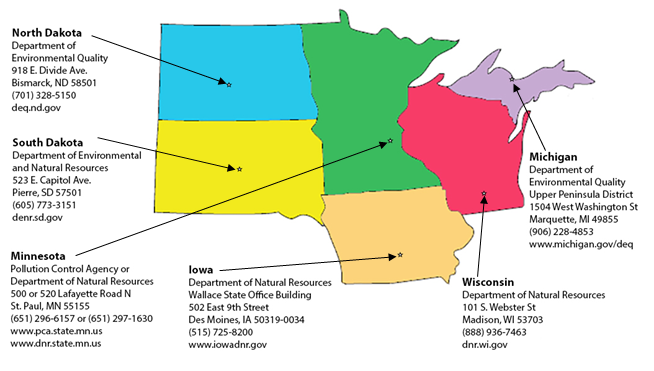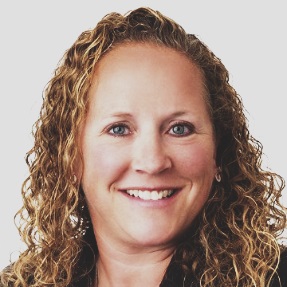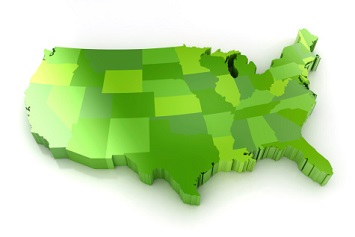Cooperative federalism. The idea encourages national, state, and local governments to interact cooperatively and collectively to solve common problems rather than make policies separately.
Since its establishment in 1970, the purpose of the U.S. Environmental Protection Agency (EPA) has been to provide effective enforcement responsibility for federal environmental regulations—a more autonomous approach than cooperative federalism would offer and the umbrella under which state and local governments would operate. In the Trump era, downsizing of EPA’s budget and staff has forced states to rethink their positions on environmental protection. According to EHS Daily Advisor, the EPA released its environmental enforcement results for 2017 in February 2018. The Trump EPA initiated half as many enforcement cases and assessment penalties than in the first year of each of the previous three administrations. Despite this decrease in oversight activity at the federal level, current trends in regulatory compliance suggest that federal environmental regulations are not going anywhere. Modern political environments have caused decreases in regulatory enforcement pressure from the EPA; however, state, local, and community groups have increased their focus on achieving environmental compliance, especially in the commercial sector. The current EPA aspires to embrace cooperative federalism and give states more of an equal role in enforcement.
Several discussions about cooperative federalism have been ongoing since the current administration took office in January 2017. How is this going to affect enforcement of environmental laws and regulations? What does this type of policymaking mean for businesses? The January/February 2018 issue of the Environmental Forum attempts to answer these questions. Stan Meiburg, Director of Graduate Studies in Sustainability at Wake Forest University, notes that an effective environmental system has “two strong partners working effectively to produce environmental results.” Bob Martineau, Commissioner of the Tennessee Department of Environment and Conservation, goes further by saying that “cooperative federalism is really about the how, not the what. As to the what, people will agree we should breathe clean air and should have access to clean water.” Overall, for the collaborative concept between federal, state, and local entities to work, the public needs to be involved in the discussion, and their input should be considered during policymaking. State and local governments are the best people to gauge what issues their communities are facing. The underlying issue plaguing these discussions is that if the federal oversight from the EPA is not there, the states and local communities may lose momentum because of a lack of resources.
Environmental Council of the States
The Environmental Council of the States (ECOS), a national nonprofit and nonpartisan association of state and territorial environmental agency leaders, is one such resource that is available to states. ECOS was established in 1993 to improve the capability of state environmental agencies and their leaders to protect and improve human health and the environment in the United States. In June 2017, ECOS developed a document to stimulate and advance a national conversation about cooperative federalism (Cooperative Federalism 2.0, Achieving and Maintaining a Clean Environment and Protecting Public Health, ECOS, June 2017). Todd Parfitt, director of the Wyoming Department of Environmental Quality and current ECOS president, reported that “states have the firsthand knowledge of how to achieve successful implementation, including how to work with involved parties and the public.” As part of the effort to maintain oversight momentum at the state level and increase public engagement, ECOS is inspiring state programs to implement continuous improvement actions to address new environmental challenges and to modernize and streamline their decision-making processes.
As one such example of continuous improvement action, ECOS has developed an interactive Web tool to publicly communicate the progress each state has made in human health and environmental protection. ECOS Results is a voluntary project where states use existing routinely collected and reported data to tell their own story about public health and the environment. John Lync Stine, Commissioner of the Minnesota Pollution Control Agency and former ECOS president, describes the motivation behind the project: “states are better when the public is engaged in this work and when we can explain how our agency activities, programs, regulations, and services protect their health and deliver the clean and healthy environment they desire.” Each state is able to track and report data in four fundamental areas: air healthy to breathe, healthy and thriving communities, less and properly managed waste, and water clean and available for all uses. This phased project is expected to have all states participating by August 2018.
What Does This All Mean for Business, and Who Is Enforcing the Regulations in My Area?
Increased state involvement in developing policies for public health and environmental protection will not affect the environmental requirements first put in place by the federal EPA—just who is enforcing them. Facilities will still be required to meet state (and federal in some cases) regulatory compliance requirements for important areas such as air emissions, water discharges, waste generation, chemical management, and the regulation of tanks. Under the umbrella of federal EPA oversight, state governments have been implementing compliance programs delegated to them since the 1970s; therefore, the added responsibility from the political shift toward cooperative federalism is not new territory for them. This early in the shift, the levels of enforcement will vary from state to state as they adapt to the new system. What’s more, state governments have become increasingly important in advocating and implementing stronger human health and environmental protection programs. To businesses, this means that you not only are still required to meet past environmental requirements, but also, increased scrutiny at the state level could mean your requirements have potentially increased. Now is the time to gain visibility on your regulatory responsibility.
The following map contains a list of enforcement authorities and contact information for the Great Lakes Region and Upper Midwest states (Minnesota, North Dakota, South Dakota, Iowa, Wisconsin, and the Upper Peninsula of Michigan).

It is important to contact the appropriate state agency to determine what regulations could apply to your facility. Regardless of the uncertain political environment, facilities will remain accountable for their regulatory compliance requirements and will be required to follow all applicable federal and state environmental laws and regulations.
About Bay West
Bay West, a leading environmental consulting, high-hazard industrial cleaning, and emergency response provider in the Upper Midwest, delivers premium services at competitive pricing. In line with our position as the industry leader in safety, we now offer comprehensive regulatory environmental compliance and training solutions for our clients, including facility environmental compliance program and reporting support.
Bay West has the technical regulatory compliance expertise and can assist with navigating the applicable regulations and help you achieve and exceed regulatory compliance. For example, Toxic Release Inventory (TRI) Reports, which detail the type and amount of chemicals manufactured, processed, or otherwise used by industrial facilities, are due by July 1, 2018, to the EPA and the state regulatory agency where the facility is located. Are you prepared to complete and submit these reports by the deadline? Contact our environmental compliance experts today for your regulatory environmental compliance program needs.
 Join Wendy Tindall, Environmental Compliance Manager for Bay West, LLC, for her live webinar Toxic Release Inventory Reports: Ensure Timely Compliance of Updated Reporting Requirements Before the July 1 Deadline, taking place on May 10, 2018, from 2:00 p.m. to 3:00 p.m. Eastern, 11:00 a.m. to 12:00 p.m. Pacific. Join Wendy Tindall, Environmental Compliance Manager for Bay West, LLC, for her live webinar Toxic Release Inventory Reports: Ensure Timely Compliance of Updated Reporting Requirements Before the July 1 Deadline, taking place on May 10, 2018, from 2:00 p.m. to 3:00 p.m. Eastern, 11:00 a.m. to 12:00 p.m. Pacific.
During this engaging presentation, Wendy will walk through a step-by-step approach for completing and submitting the TRI report. If interested, attendees can prepare for the webinar by compiling a list of the types and amounts of chemicals they have onsite at their facility. This list will help attendees determine if their facility requires a TRI report and jump start your submittal process. You’ll learn:
|


